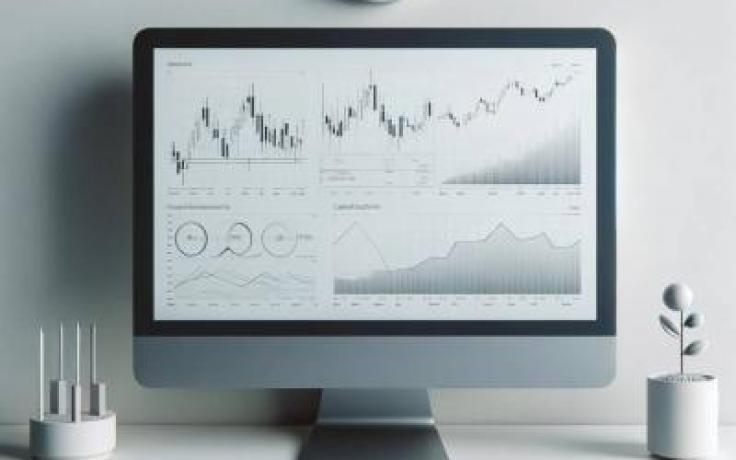Ready to Get Started?
Start here. Join 2.9M Libertex users around the world!

Start here. Join 2.9M Libertex users around the world!
Leverage is a familiar concept in the realm of financial markets. It allows traders and investors to achieve higher. This financial manoeuvre typically involves engaging brokerage services to secure capital that surpasses one's personal funds. This tactic both enhances the prospects for financial gain and the susceptibility to losses, spotlighting the essential role of strategic risk oversight and capital allocation.
To trade with leverage, traders first need to create a specialised account that allows them to make trades that transcend their own capital using supplementary funds furnished by a brokerage. This arrangement requires margin, which is part of the trader's resources earmarked as collateral. These margin levels are dynamic, mirroring the brokerage's regulations and evolving conditions in financial markets and for instrument types.
The magnetic pull of leveraged trading is its ability to augment potential profits. However, leverage also includes enhanced risks, particularly the threat of losses due to forced liquidation if the market moves against an open position and its value tumbles below the defined maintenance margins. When confronted with these tides, traders might find themselves depositing more funds to sustain their positions or face a forced closure of those positions by brokers.
Navigating through the uncertainty of leveraged trading requires a precise calibration of trading safety nets: Stop Loss and Take Profit orders. Stop Loss orders function as a bulwark against escalating losses by automatically closing trades upon reaching designated loss metrics. Take Profit orders, on the other hand, lock in profits by closing trades when the assets hit a pre-determined price. Both types of orders allow traders to oversee potential financial ebbs and flows with minimal engagement.
Risk measurement metrics such as Value at Risk (VaR) and Conditional Value at Risk (CVaR) serve as navigational stars in the galaxy of leveraged trading, shedding light on possible threats to one’s portfolio tied to specific probabilities within a set timeframe. These tools are indispensable for appraising risks linked to leveraged positions and sculpting informed tactical choices around the leverage ratio and positional magnitudes.
Diversification is one way to mitigate risk. Investing in an array of assets and markets dilutes a portfolio’s aggregate risk exposure, thus neutralising one asset's downturn with another's upswing.
At the heart of leveraged financial strategising lies the quest for the golden ratio between borrowed resources and personal capital. Too much excessive borrowing magnifies the peril of downturns, while conservative borrowing may limit how much profit can be earned. Striking an optimal balance between risk and return is the key to success in leveraged trading.
The Kelly Criterion presents a blueprint for gauging the ideal trade scale based on success likelihoods and the anticipated profit-to-loss spectrum. Originally from the world of gambling, this criterion can be applied to leveraged trading, advising on the capital fraction to risk in each undertaking.
Prospering in leveraged trading hinges on adapting to market changes. Turbulent phases might prompt a shift towards conservatism, which would require paring down the size of trade and leverage. On the other hand, low growth might require leverage to be increased, aiming to capitalise on burgeoning profit opportunities.
In times of intense market volatility, swiftly adjusting tactics is a must when it comes to safeguarding margins and avoiding liquidations. This may involve using automated trading systems to instantly execute Stop Loss and Take Profit orders, in addition to scalping or day trading to earn on short-term price fluctuations.
Continuously monitoring leveraged ratios and margin requirements is incredibly important for avoiding involuntary position closures. Traders should regularly review their portfolios to ensure that they don’t exceed the recommended thresholds and that their positions are backed by enough capital to maintain the margin.
Margin trading offers traders opportunities to increase their profit potential but comes with increased risk. Succeeding at margin trading requires a deep understanding of market mechanisms and a strict adherence to risk and capital management principles. Experienced traders use a combination of technical and fundamental analysis, strategic planning and ongoing education to adapt their strategies to changing market conditions.
The most important thing in risk management is the disciplined adherence to developed strategies, including setting Stop Loss and Take Profit levels, proper use of borrowed funds and maintaining adequate portfolio diversification. Adapting to market conditions and being prepared to respond quickly to unexpected situations can significantly reduce potential risks and increase the chances of success.
In conclusion, margin trading is not suitable for all investors since the high level of risk can result in significant losses. However, with the right approach to risk and money management, it can become a valuable tool in the arsenal of an experienced trader. Training, experience, and continually improving your skills and strategies are the keys to success in the world of margin trading.
Start here. Join 2.9M Libertex users around the world!